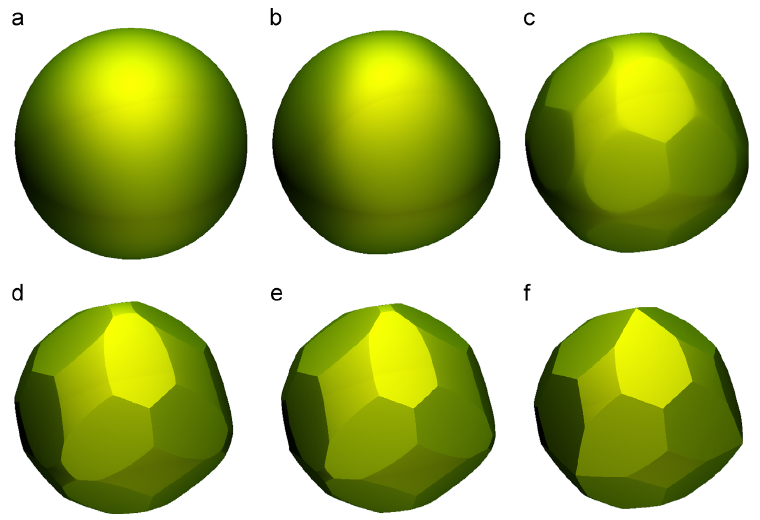
Frigyes Podmaniczky1, Gyula Tóth2, Tamás Pusztai1, László Gránásy1,3
1Institute for Solid State Physics and Optics, Wigner Research Centre for Physics, P.O. Box 49, Budapest H-1525, Hungary
2Department of Mathematical Sciences, Loughborough University, Loughborough, Leicestershire, LE11 3TU, U.K.
3BCAST, Brunel University, Uxbridge, Middlesex, UB8 3PH, United Kingdom
The Euler-Lagrange equation of the phase-field crystal (PFC) model has been solved under appropriate boundary conditions to obtain the equilibrium free energy of the body centered cubic crystal-liquid interface for 18 orientations at various reduced temperatures in the range ε∈[0,0.5]. While the maximum free energy corresponds to the {100} orientation for all ε values, the minimum is realized by the {111} direction for smaller ε(<0.13), and by the {211} orientation for higher ε. The predicted dependence on the reduced temperature is consistent with the respective mean field critical exponent. The results are fitted with an eight-term Kubic harmonic series, and are used to create stereographic plots displaying the anisotropy of the interface free energy. We have also derived the corresponding Wulff shapes that vary with increasing ε from sphere to a polyhedral form that differs from the rhombo-dodecahedron obtained previously by growing a bcc seed until reaching equilibrium with the remaining liquid.


